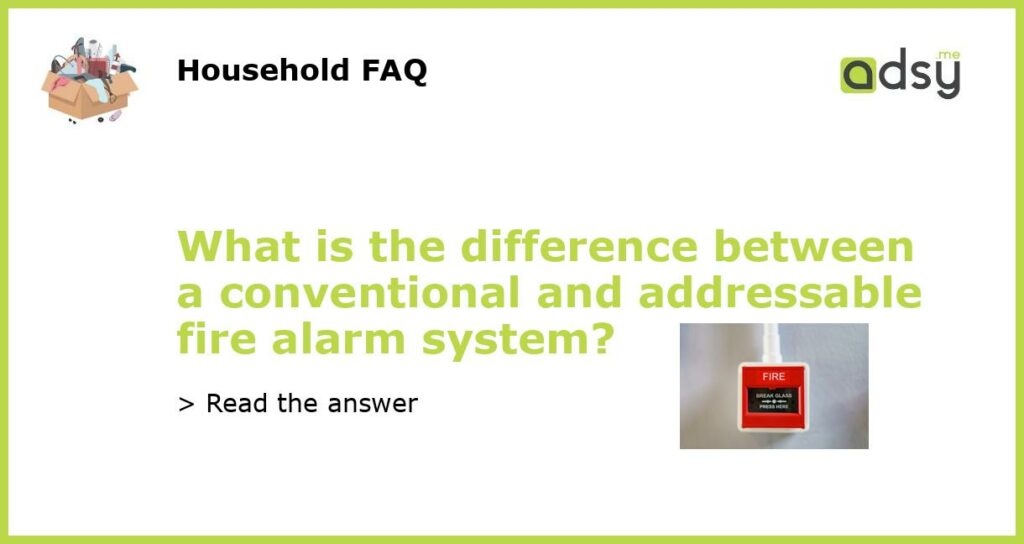Conventional Fire Alarm Systems
A conventional fire alarm system is the most basic type of fire alarm system available. The concept of a conventional fire alarm system is relatively simple; each device connects to a main control panel, and in the event of a fire, the control panel will indicate the general location of the fire. Conventional systems are generally used in small commercial and residential buildings.
Addressable Fire Alarm Systems
An addressable fire alarm system is a more advanced type of fire alarm system. Rather than indicating a general area of a fire like a conventional system, each device in an addressable system has its own unique address. This allows the control panel to pinpoint the location of the fire with much greater accuracy. Addressable systems are typically used in larger commercial and industrial buildings.
Detection Accuracy
The main difference between conventional and addressable fire alarm systems is the level of detection accuracy. While conventional fire alarm systems are useful for detecting a fire in a general area, an addressable fire alarm system is much more accurate, often detecting a fire in a specific room or even a specific piece of equipment.
Cost Differences
Addressable fire alarm systems can be more expensive to install than conventional systems. This is due to the fact that each device in an addressable system requires its own unique address, which can be more time-consuming to set up than in a conventional system.
Maintenance Requirements
Both conventional and addressable fire alarm systems require regular maintenance and testing to ensure they are functioning properly. However, addressable systems may require more specialized maintenance due to their increased complexity. Regular maintenance is critical to ensure that a fire alarm system is ready to function in the event of an emergency.






